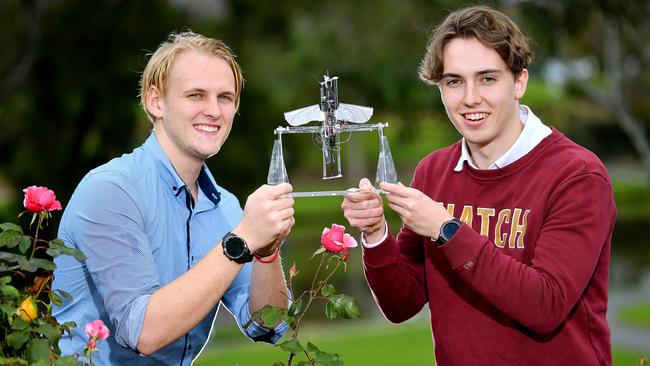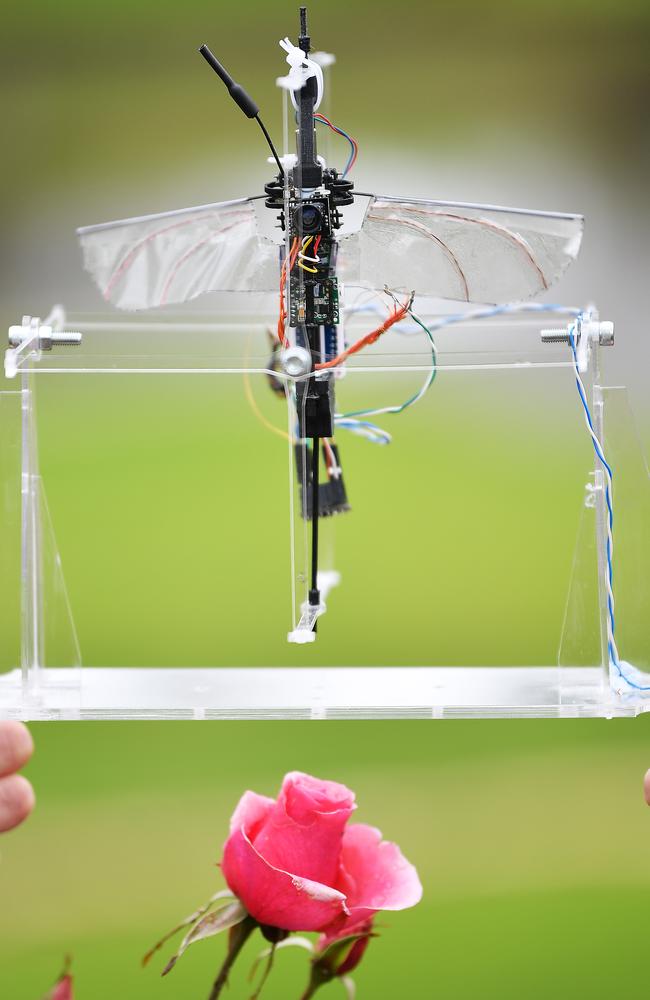University of Adelaide engineering students create pollination drone
Farmers who rely on bees to pollinate crops may one day have an alternative, thanks to a team of young inventors in Adelaide and Korea.

SA News
Don't miss out on the headlines from SA News. Followed categories will be added to My News.
- Drone piloting being taught to Seaton High School students
- How to get the most out of your Advertiser subscription
Taking tips from nature, a team of mechanical engineering students has invented a pollination drone that could one day assist bees.
Together with collaborators in Korea, the University of Adelaide students are perfecting their small aerial vehicle, which has a probe to transfer pollen from one flower to another.
James Cartwright, 22 of Stirling says the Adelaide contingent is mainly working on the flight control system.
“It will at least hover when we’re finished,” he said.
“The overall goal is for it to approach a flower and pollinate it, but we have a lot of work still to do.”
William Foster-Hall, 22 of Semaphore has enjoyed applying his knowledge “outside of the classroom”.
“The project has been challenging but also quite exciting,” he said.
“We’re at the forefront of current research in mechanical and aeronautical engineering, using technology that has not been tested or widely adopted. There’s only a handful of other projects like this in the world.”
The team of four, also including William Tam, 23 of Daw Park and Harshil Vinod, 22 of Magill, has already invested a combined total of more than 400 hours work on the project.

They are working towards Ingenuity, an annual event organised by ECMS Faculty as a platform for students to showcase their innovative honours projects publicly, usually held in October.
Supervisor Associate Professor Rini Akmeliawati is excited about the potential for technology to meet growing demand for automation in agriculture. She’s especially looking forward to flight tests next month.
“It’s very good, they’re progressing really well,” she said.
“They managed to manufacture the prototype, put and program the electronics including sensors, vision, control and communication systems, get it to flap its wings accordingly, which is really quite an achievement.”
The complex project includes elements of control and sensor technology, computer vision, artificial intelligence and machine learning.

